Learn six GTM models Divvy used on their incredible journey from 0 to a $2.5B exit in just four years with the former CRO of Divvy, and SaaStr fan favorite, Sterling Snow. As former CRO at Divvy and current Partner at Pelion Venture, Sterling Snow knows what’s required to build and motivate a high-performing team.
Stirling walked us through their step-by-step process during last week’s Workshop Wednesday, a weekly series we hold ongoing each and every Wednesday at 10 a.m. PST to bring you some of the best SaaStr speakers in a completely free, live and interactive format.
You Need the Right Team to Make This Work
What sets a high-performing team apart?
Being able to compress learnings in a faster amount of time. People can’t really take shortcuts, but they can cram a lot of learnings, mistakes, and successes into a short timeframe. Divvy was a great story, and it took the entire team to make it become so.
“I’m a huge believer in what A players and high-performing teams really mean,” Sterling says. “The best people are far more valuable than you think they are, and when you put them together into a high-performing team and environment where you’re responsible for holding each other to high standards and a lot of accountability… it’s a special feeling.”
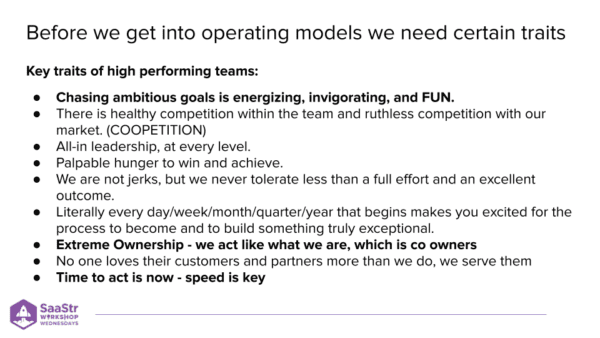
So, before you start thinking about these GTM models, you have to think about the attributes of your team. If you want to get big fast and you’re signing up for hypergrowth, you have to hire people who:
- Are energized by chasing ambitious goals. Yes, it’s stressful, and you might be lying on the floor at times, thinking you have no more energy. But you have to be fired up by that possibility.
- Value extreme ownership. You can’t have anyone on your team with the mentality that they’ll “get to it tomorrow” or “that’s not my job.” It won’t work. If everyone doesn’t feel like everything depends on them doing their job well, and they lift and help people out, these models will be of no use to you.
- Maniacally focused on urgency. These models are all about how to do more in less time, so you have to have speed as part of your culture and the traits of the high-performing team you’re building.
Just as important as the traits you’re looking for are those you won’t tolerate.
You need to avoid people who make excuses, talk poorly about other people behind their backs, and want to work at a great company but not build it. Conflict should always be out in the open with intellectual and emotionally honest conversations. Hypergrowth is only for the builders, not the passengers.
And remember, the GTM models that work for Divvy only worked because the team was great.
GTM Model #1: Align the Funnel

Everything you do to align the incentives will reduce friction and waste. If everyone is hyper-focused on the right things, you have faster conversions. For example, what do you measure a marketing team on?
Old school might be MQLs or SQLs. But what Sterling did at Divvy was measure everybody a step deeper.
If you have centralized leadership here, the CRO model where demand gen flows to the CRO responsible for top and bottom line numbers, you get more out of the funnel.
GTM Model #2: Budget, Quota, Goal
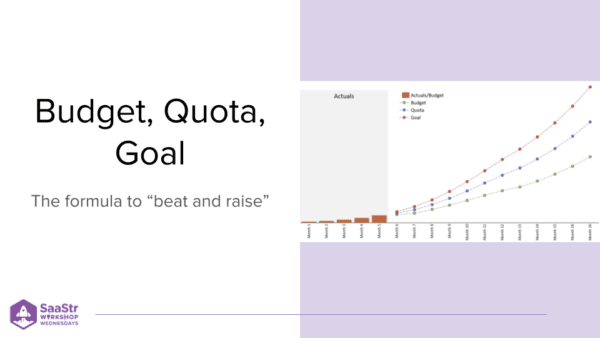
At all times, you have three different numbers — budget, quota, and goal.
- Budget — This is your come hell or high water number you can’t ever miss unless you’re ready to resign. It’s the number that you always meet when you show up to a board meeting.
- Quota — What you point your team toward and roll up all individual numbers to. They don’t need to know the budget number. All they need are the quota and goal numbers. You have some margin of safety between what you’ve committed to, how you build your financial plan, and what you’re actually pointing everyone to.
- Goal — This is your stretch number. You won’t hit it every time.
It’s hard to get quota right. How do you know if you’re stretching enough? Your goal stretches you and is something to celebrate more extravagantly. If you run this from a finance and revenue perspective, you get a chance to “beat and raise” and find the right numbers. If someone hits a stretch goal, you have more wiggle room in quota. Sometimes, you can raise the expectation and demand more of yourselves and get in that motion repeatedly.
GTM Model #3: Shorten the Cycle
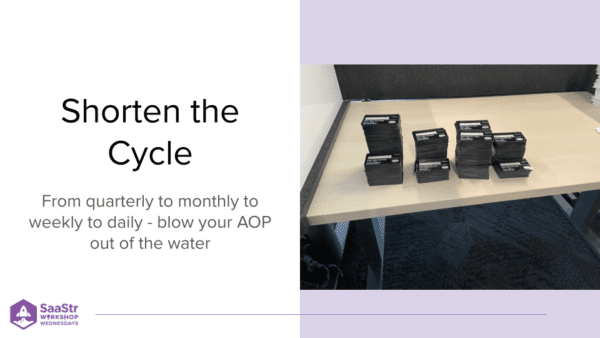
Every single thing that you do, you want to figure out how to do it faster. One of the biggest mechanisms you have in this world are quotas and timeframes you’re reporting on those numbers. This depends a lot on ACV, who you’re selling to, and what the product is, but if you take something that’s typically reported on a quarterly basis and shorten it to a monthly cadence…
You’ve just given yourself 3x the amount of coverage and the ability to learn and say, “Did we hit or miss, and what are we doing that’s working?”
At Divvy, they moved everything to monthly and, in rougher times, to weekly numbers and reporting. The harder things get, the tighter your loop on exactly what you’re doing. Another benefit of this GTM model is if you’re on a monthly basis, you can take your annual plan and raise that number 12x.
GTM Model #4: T3/B3
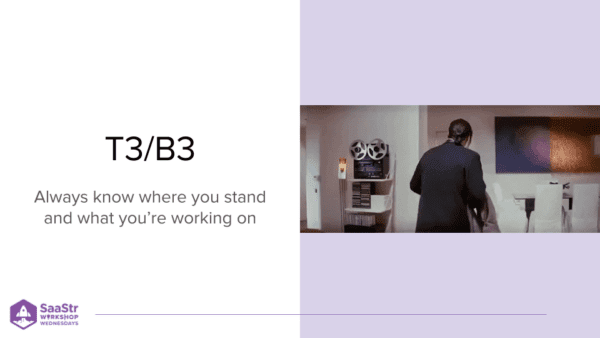
T3/B3 is the formula Divvy used to make sure everyone understood how they were doing at all times. It stands for the top three and bottom three.
Every month, the team has a one-on-one with their manager. They actually sit down with a simple deck showing the top three things someone is doing and the bottom three that might be holding them back from progressing in their career. This was bi-directional, so the manager did it for the team, but the team also did it for the manager. T3/B3 is an easy, non-confrontational way to show what you’re doing well and areas for improvement.
As leaders, this feedback loop is powerful because you might not have gotten valuable information about how you’re leading, and it allows people to understand what they need to focus on to accelerate their careers.
GTM Model #5: Name, Number, and North Star
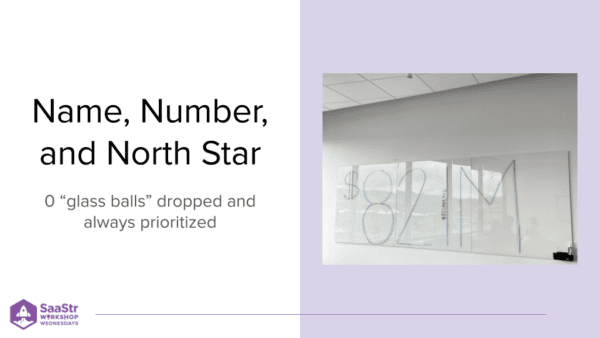
Another model Divvy used is Name, Number, and North Star. A North Star metric can be ridiculously hard to define, but once you do, the idea is that this is the one above all guiding metric that guides all broader goals and objectives. For example, Netflix’s North Star is the number of user minutes. X’s North Star is unregretted user minutes. The framework Divvy used is that every number in their financial model had to have a name next to it. Otherwise, it was considered at risk.
At Divvy, the North Star was usage or spend going through the platform.
So, you need to understand who you are, what number you’re responsible for, and what North Star that rolls up to. You’re always juggling a lot of balls in a startup; and some are made of glass, and others are made of rubber. If you do a good job of articulating which is which, it results in the behaviors you’re aiming for.
GTM Model #6: Sell, Design, Build

How do you make sure you’re building the right products and features, and how do you validate this is what the market wants before you build it? You have to figure out what someone is willing to pay or change their behavior for. Ask yourself, “How do I go and sell something before I go about the work of committing engineers to it and building it?”
It’s human nature for people to say something is cool and would be super valuable, and another thing for them to part with their money or change a material behavior. If someone is willing to part with their money before you’ve built the thing, it is something the market would actually be appreciative of. This model is particularly valuable the earlier you are in your journey as a startup.
GTM Models Recap
These GTM models are simple but not easy. Nothing is rocket science, but they can be challenging to do at a high level and sustain over a long period of time. The six GTM models Divvy used going from 0 to a $2.5B exit include:
- Align the funnel — reduce friction with one owner
- Budget, quota, goal — protect the downside, maximize the upside
- Shorten the cycle — never drop a glass ball, and shorten the cycle in every scenario you can
- T3/B3 — everyone has a platform for feedback both up and down the ladder
- Name, number, and North Star — know who is on first and what they are responsible for
- Sell, design, build — explore product offerings and sell them before you dedicate the resources to build them
The post The 6 Must-Have Go-To-Market Models Divvy Used to Propel Its $2.5B Exit with Former Divvy CRO Sterling Snow appeared first on SaaStr.
via https://www.aiupnow.com
Amelia Ibarra, Khareem Sudlow
